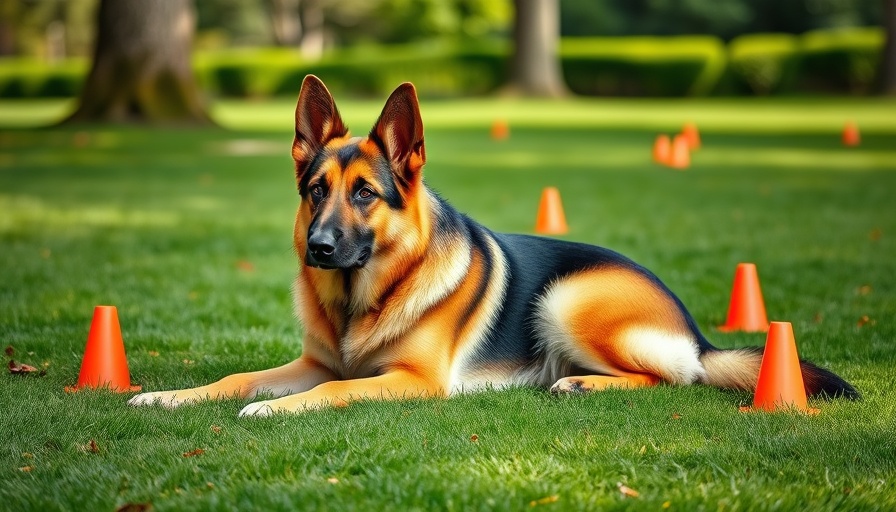
The Joy of Training Your New Canine Companion
Bringing a dog into your life is an exciting journey filled with love and companionship. However, training your new furry friend is a critical part of ensuring that both you and your pet enjoy this adventure to the fullest. In this guide, we’ll explore essential tips for dog training that not only aim to enhance your canine’s behavior but also strengthen the bond you share.
The Science Behind Dog Training: Positive Reinforcement
Training a dog effectively starts with understanding how they learn best. One of the most important techniques is positive reinforcement, which involves rewarding your dog immediately after they perform a desired behavior. For instance, if your dog sits when asked, reward them promptly with a treat or praise. This immediate feedback helps your dog associate the good behavior with positive outcomes, making them more likely to repeat the action.
Many trainers now advocate for this method instead of relying on negative reinforcement, which can create fear and anxiety in dogs. The goal is to create a nurturing environment where your pup can thrive and build confidence.
Consistency: The Key to Successful Training
Consistency in dog training cannot be overstated. It’s crucial to use the same commands and gestures each time you train your dog. For example, if you want your dog to “stay,” don’t alternate between saying “stay” and “halt.” Clear and consistent communication not only helps your dog understand what you expect but also speeds up their learning process. Involving all family members in the training is essential; everyone should use the same cues for commands to avoid confusing your dog.
Setting Realistic Expectations: Every Dog Is Unique
When training a new puppy, understanding their developmental needs is vital. Puppies typically have shorter attention spans, so keeping training sessions brief—around 5 to 10 minutes—is important. For adult dogs, you can gradually extend training to 15 to 20 minutes. Remember that learning is a process filled with ups and downs; don’t be discouraged if your dog doesn’t grasp a command right away. Patience is key!
Timing: When to Reward and Correct
Timing is everything in dog training. To build a clear connection between behavior and results, you should reward or correct your dog immediately following their actions. This precision helps them understand what behaviors earn praise and which ones might lead to reassessment or gentle corrections. Remember, always use non-physical gentle corrections to help your dog learn the boundaries without fear.
Creating a Positive Learning Environment
The atmosphere where you train your dog plays a significant role in their ability to learn effectively. Start training in a quiet, distraction-free zone and gradually introduce more noises and activities as your dog becomes more confident. A positive, encouraging environment will help reinforce their good behaviors and create a joyful learning experience.
Common Mistakes to Avoid When Training Your Dog
Every dog owner makes mistakes, and that's perfectly okay! However, being aware of common pitfalls can help you become a better trainer. One frequent mistake is overloading your dog with too many commands at once. Focus on one or two new commands at a time. Another mistake is inconsistency in commands and rewards. Try to ensure that everyone involved in the training is on the same page.
Another crucial aspect is to avoid negative associations. Ensure that training remains a fun experience; if your dog dreads training sessions, they won’t learn effectively. If frustration arises, take a break and try again later with a more relaxed approach.
Encouraging Progress: Celebrate Your Dog's Achievements!
As your dog masters new skills and commands, make sure to celebrate their progress! Whether it’s a little treat, an extra playtime session, or hugs and affection, showing appreciation fuels their motivation. The more fun and engaging the training feels, the more likely you’ll both enjoy the process.
Join the Growing Community of Dog Owners
As training unfolds, remember you’re not alone. Many communities and online forums are dedicated to sharing dog training tips and experiences. Exploring these resources can provide you with additional insights and help you build a support system with other dog owners.
Now is the time to take action. Start introducing these essential training techniques today, and witness how they transform your dog into a well-behaved, happy companion. With patience, love, and consistent practice, you can cultivate a relationship with your dog that lasts a lifetime.
 Add Row
Add Row  Add
Add 




Write A Comment